This biblical city, pivotal in Abraham's journey, holds secrets at the crossroads of ancient civilizations—discover Haran's hidden legacy.
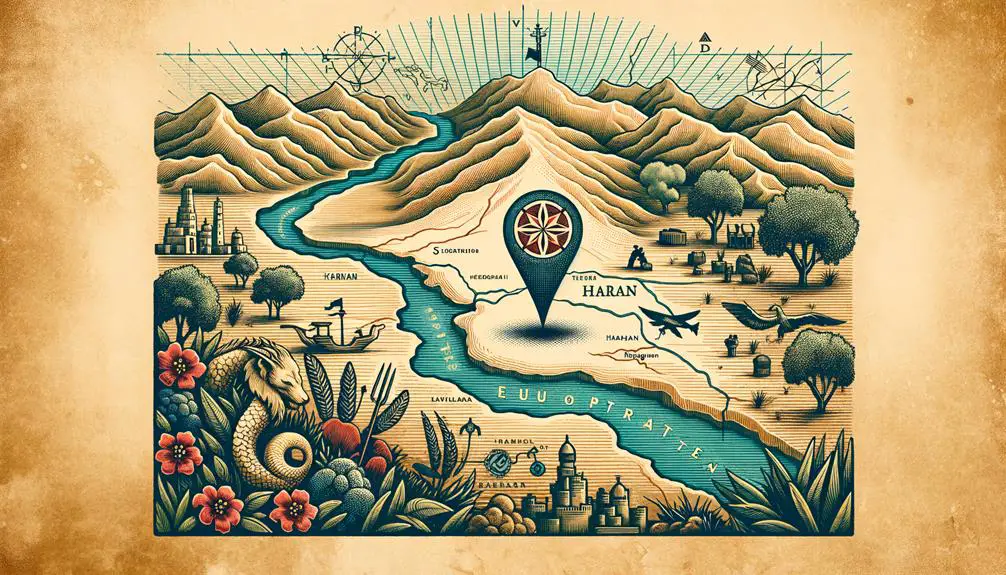
Where Was Haran in the Bible
Did you know that Haran is mentioned 11 times in the Bible?
This ancient city, often overshadowed by more prominent locations, holds an intriguing position in biblical history.
You'll find Haran located at a crossroads of ancient civilizations, playing a central role in the journey of Abram (later Abraham) and his family.
Its geographical and historical significance in the narratives of faith and migration invite a deeper look into how such places shaped the stories we're familiar with today.
Let's explore why understanding Haran's context enriches our appreciation of its legacy and influence in biblical accounts.
Key Takeaways
- Haran was a strategic crossroads in ancient trade routes, enhancing its biblical and historical significance.
- The city is associated with Abram's journey, symbolizing faith, obedience, and divine guidance in biblical narratives.
- Archaeological discoveries in Haran connect biblical stories to tangible artifacts, bridging faith and history.
- Haran served as a vital cultural and religious exchange hub, influencing diverse faith traditions and practices.
Haran's Geographic Location
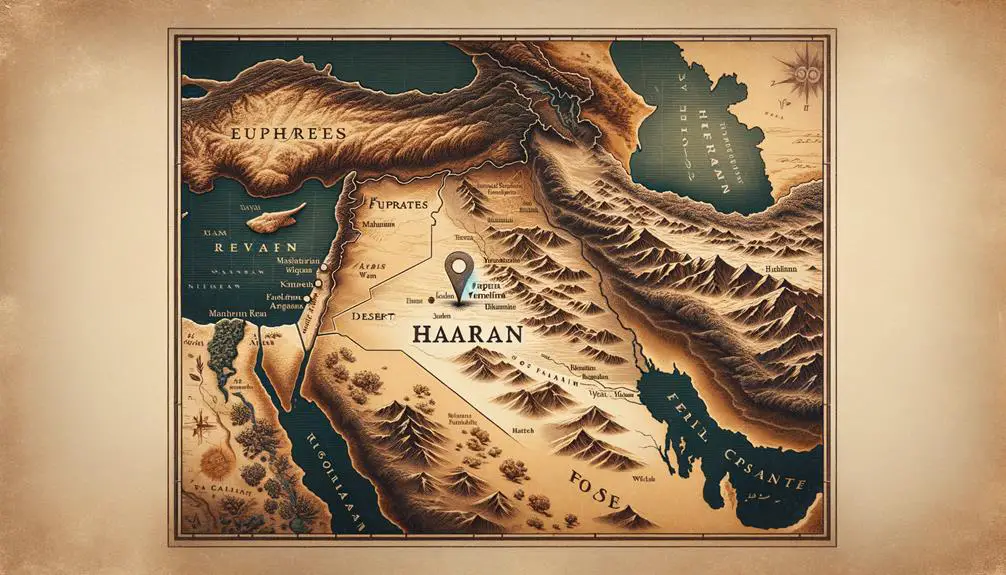
Haran, an ancient city mentioned in the Bible, sits strategically at the crossroads of ancient trade routes in the region now known as southeastern Turkey. You'll find that its placement was no coincidence; it was pivotal for commerce, culture exchange, and military movements throughout history. By examining Haran's climate and its modern identification, you'll gain a deeper understanding of its significance and why it's frequently referenced in historical and biblical texts.
Haran's climate is characterized by hot summers and cold, wet winters, typical of the continental climate found in this part of the world. This weather pattern would have influenced the lifestyle and agricultural practices of Haran's ancient inhabitants. They relied on the seasons for growing crops and raising livestock, which in turn supported the city's bustling trade. The climate played a crucial role in determining the success or failure of harvests, directly impacting the prosperity of the city and its people.
In terms of modern identification, Haran is associated with the archaeological site of Harran, located near the border of modern-day Turkey and Syria. This identification has been supported by extensive archaeological research, which has unearthed remnants of ancient buildings, artifacts, and inscriptions that corroborate historical and biblical accounts of the city. Today, Harran stands as a testament to the city's historical significance, attracting scholars, archaeologists, and tourists interested in its rich past.
Understanding Haran's geographic location, from its strategic positioning to its climatic conditions, offers valuable insights into its historical importance. It's a fascinating journey into how geography and climate can shape the destiny of a city throughout the ages.
Biblical References to Haran
Why is Haran frequently mentioned throughout the Bible, and what significance does it hold in these ancient texts? Haran isn't just a location on a map; it's a pivotal setting for numerous biblical narratives, deeply intertwined with the stories of key figures. Its significance is multifaceted, encompassing both the spiritual journey of individuals and the overarching narrative of God's people.
Haran's climate, often described as temperate, provided a suitable environment for pastoralism and agriculture, making it a prosperous location for those who settled there. This prosperity likely contributed to its importance in biblical stories, offering a stark contrast to the arid landscapes that characterized much of the region. The climate not only supported physical sustenance but also symbolized a place of growth and development in the spiritual narratives of the Bible.
Familial connections play a crucial role in Haran's biblical references. It served as a crossroads for family narratives, most notably for Abraham and his descendants. Abraham's journey from Ur to Canaan, with a significant stop in Haran, marks a foundational story in the Bible, symbolizing faith and obedience to God's call. Haran is also where Jacob found refuge and worked for Laban, marrying Leah and Rachel, which further cements its significance in the lineage of the Israelites.
Through these narratives, Haran emerges not merely as a geographical location but as a backdrop to pivotal moments of faith, family disputes, and divine encounters. Its frequent mention underlines its importance in the biblical story, serving as a testament to the intricate relationship between place, people, and faith.
Haran's Historical Significance
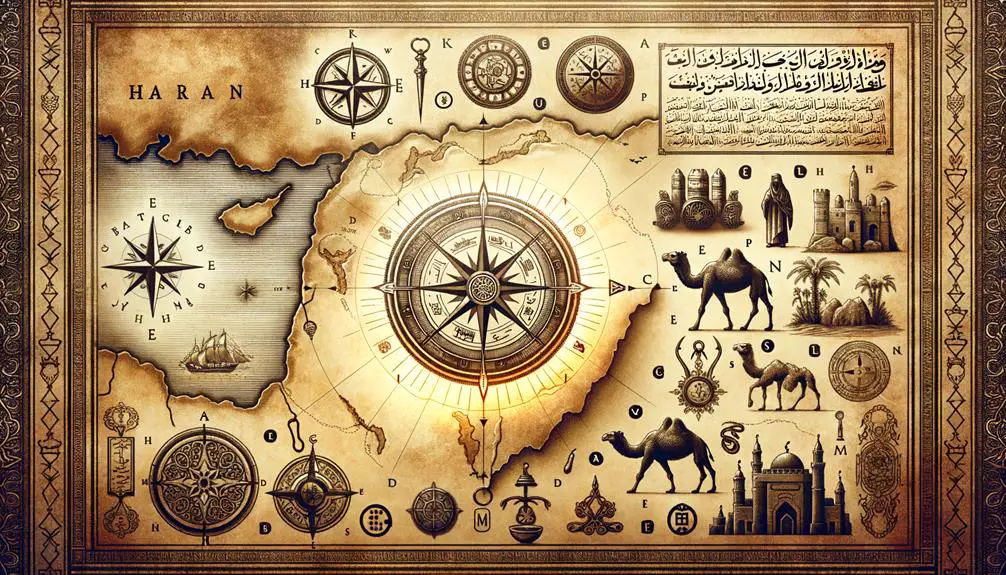
Delving into the historical significance of Haran reveals its role as a vital crossroads in ancient Near Eastern civilizations, shaping not only biblical narratives but also the broader tapestry of history. As you explore Haran's past, you'll find that its architecture offers a unique window into the era's socio-economic and religious practices. The remnants of ancient buildings, temples, and city walls stand as silent testaments to Haran's once bustling activity and its strategic importance on trade routes that connected the major empires of Mesopotamia, Anatolia, and the Levant.
Haran's architecture, with its distinct features, reflects the confluence of different cultural influences, showcasing the city's role as a melting pot of civilizations. The intricate designs found in excavations reveal a sophisticated society that valued art, religion, and commerce. These structures not only served practical purposes but also held significant religious importance, indicating Haran's role as a spiritual center for many.
The modern relevance of Haran can't be overstated. Today, it serves as a crucial link for historians and archaeologists seeking to understand the complexities of ancient Near Eastern societies. Its well-preserved ruins offer insights into the past, helping contemporary scholars piece together the puzzle of human history. Additionally, Haran stands as a reminder of the enduring legacy of ancient cities and their impact on present-day cultural and historical narratives.
In essence, Haran's historical significance lies not just in its biblical mentions but in its contribution to our understanding of ancient civilizations. Its architecture and enduring legacy continue to fascinate and inform, bridging the gap between past and present.
The Journey of Abram
Building on our understanding of Haran's historical and architectural significance, we'll now explore how Abram's journey to this ancient city marks a pivotal moment in biblical history, shedding light on the interconnectedness of faith, migration, and divine promise. Abram's embarkation from Ur to Haran wasn't just a physical relocation; it was a profound leap of faith, showcasing his unwavering trust in God's guidance. This move, prompted by divine instruction, wasn't merely about changing landscapes but was deeply symbolic of Abram's commitment to follow God's will, setting the stage for the formation of a covenant that would forever alter the course of religious history.
However, Abram's journey wasn't devoid of challenges. Familial tensions surfaced, illustrating the complexities that often accompany acts of faith. Leaving one's homeland for an unfamiliar territory requires not just physical readiness but also a mental and spiritual resilience. Abram's ability to navigate these familial tensions, while maintaining his faith, speaks volumes about his character and the strength of his belief. These tensions also highlight the human aspects of biblical figures, making their stories more relatable and their faith more inspirational.
Abram's arrival in Haran thus represents more than a mere stopover; it symbolizes a crucial phase of spiritual testing and growth. His journey to Haran, fraught with uncertainties and familial challenges, underscores the significance of faith in the face of adversity. It's a compelling narrative that not only reflects the personal growth of Abram but also illustrates the broader theme of divine promise and human perseverance.
Haran in Ancient Texts
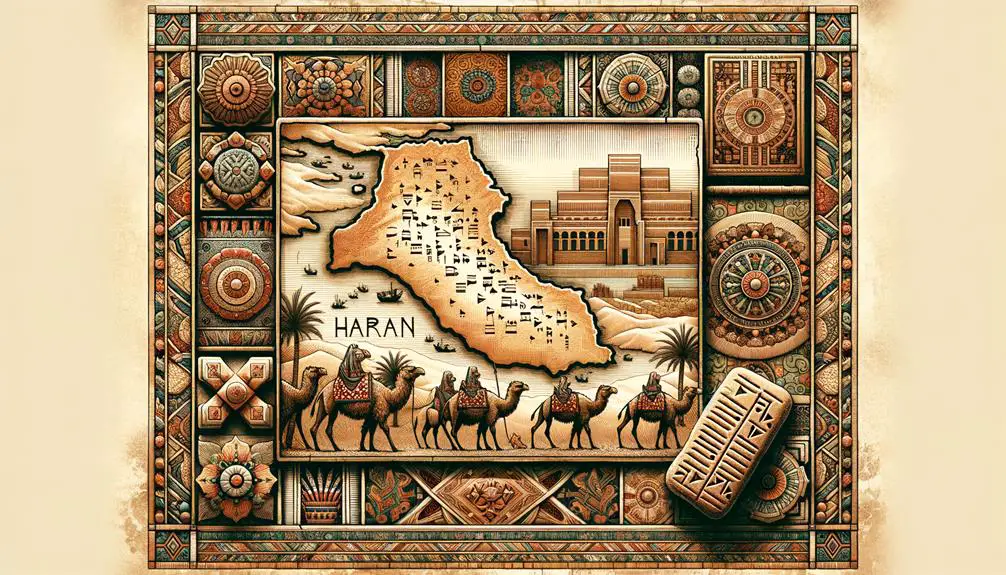
You'll find that Haran's geographic location, historically nestled at a crossroads of ancient civilizations, offers a unique lens through which to understand its significance.
References to Haran in ancient texts not only pinpoint its place in historical narratives but also highlight its cultural importance across various epochs.
This exploration will shed light on how Haran served as more than just a backdrop in the biblical narrative, underscoring its pivotal role in the broader tapestry of history.
Haran's Geographic Location
Where does Haran sit within the tapestry of ancient texts? Haran's geographic location, deeply entwined with its climate, has drawn comparisons to modern parallels, offering a glimpse into its past. Imagine a region where the climate dictates life, much like certain modern areas.
Aspect |
Haran's Climate |
Modern Parallels |
|---|---|---|
Temperature |
Warm, dry summers |
Similar to parts of the modern Middle East |
Rainfall |
Scarce |
Comparable to arid regions today |
Agriculture |
Dependent on seasons |
Echoes practices in contemporary dry areas |
Trade Routes |
Strategic location |
Analogous to current trade hubs |
Settlements |
Oasis for travelers |
Reminiscent of modern rest stops |
Analyzing Haran's geographic footprint through ancient texts reveals a place shaped by its environment, mirroring aspects of today's world while retaining its unique historical context.
Historical References
Turning our focus to Haran's presence in ancient texts, we find its historical significance magnified through detailed references that shed light on its past. Modern excavations in the area have unearthed artifacts and inscriptions that corroborate historical accounts, providing a tangible link to Haran's storied history.
These findings not only confirm its existence but also offer insights into the climate conditions that shaped the everyday life of its inhabitants. Through careful analysis of these ancient texts, we gain a deeper understanding of Haran's role in historical events and its impact on surrounding regions.
The evidence gathered from these excavations highlights Haran's significance on both a historical and cultural level, painting a vivid picture of its past for modern scholars.
Haran's Cultural Significance
Delving into Haran's cultural significance, we find its portrayal in ancient texts reveals a rich tapestry of religious, social, and economic life that significantly influenced the broader ancient Near Eastern society.
Aspect |
Description |
|---|---|
Haran Festivals |
Central to religious life, showcasing vibrant traditions and rituals. |
Trade |
A bustling hub that facilitated economic prosperity through strategic positioning. |
Social Structure |
Highlighted the complex hierarchy within Haran society. |
Religious Practices |
Diverse, with influences from surrounding cultures enriching local faith. |
Modern Haran |
Continues to be studied, revealing new insights into ancient lifestyles. |
This analysis underlines how Haran wasn't just a city but a cornerstone of cultural development, leaving imprints that even Modern Haran continues to explore.
Archaeological Discoveries
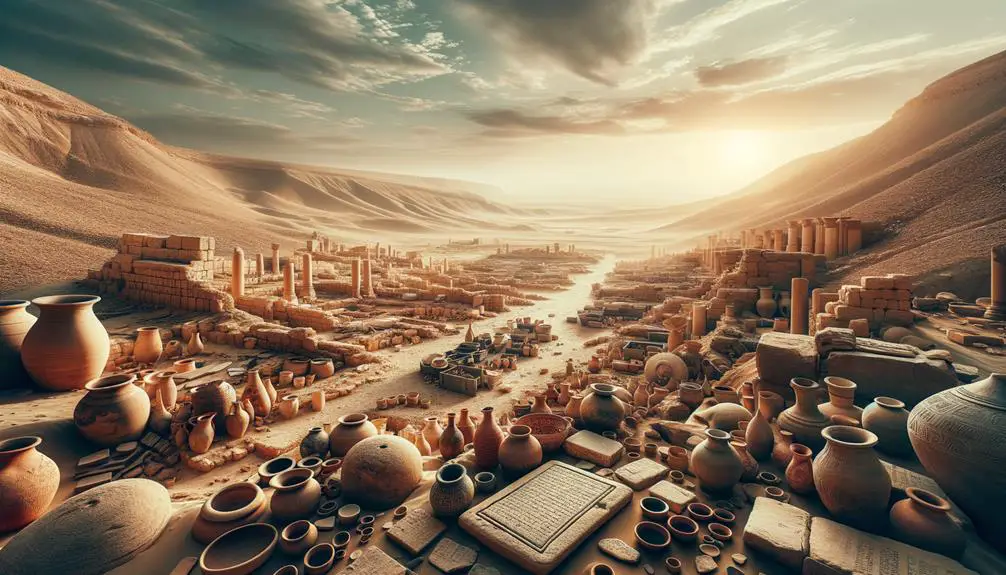
Archaeological discoveries have illuminated our understanding of Haran's significant role in biblical history, offering tangible connections to the narratives held within ancient texts. Through meticulous excavation methods, archaeologists have unearthed artifacts and structures that provide a clearer picture of life in ancient Haran. These efforts in artifact preservation haven't only safeguarded these invaluable pieces of history but have also enabled scholars to analyze them, drawing insights into the cultural and historical context of the area.
In exploring the layers of Haran's past, you'd find that the city's strategic location on ancient trade routes made it a melting pot of cultures and religions, which is echoed in the variety of artifacts found. From pottery that held the food of its inhabitants to inscriptions that narrate its history, each discovery adds depth to our understanding of Haran's place in biblical times.
These archaeological endeavors have also shed light on the architectural advancements of the era. The remnants of buildings and city walls speak volumes of Haran's significance and its role as a hub in the ancient Near East. By piecing together these fragments, historians have been able to reconstruct a vivid image of Haran's bustling streets and vibrant community life.
As you delve deeper into the findings, you'll appreciate the precision and care taken in both the excavation and preservation of these artifacts. Each layer unearthed and each item carefully preserved adds a piece to the puzzle of Haran's past, bridging the gap between the biblical narratives and historical facts. Through this lens, Haran's story isn't just preserved but brought to life, allowing us to walk in the footsteps of those who once roamed its streets.
Cultural Impact of Haran
You'll find that Haran's religious significance not only shaped the spiritual landscape of its time but also left a lasting imprint on various faith traditions.
Furthermore, the expansion of trade routes through Haran played a pivotal role in the cultural and economic exchange between civilizations, fostering connections that transcended geographical boundaries.
Exploring these aspects offers a lens into the profound impact Haran had on the ancient world, highlighting its role as a key node in the tapestry of human history.
Haran's Religious Significance
Haran holds a pivotal role in religious history, serving as a key crossroad for faiths and cultures that have shaped our understanding of the ancient Near East. It's not just a geographic landmark but a spiritual epicenter where temple practices were honed and divine encounters shaped the narratives of monotheistic religions. Its significance is multifaceted:
- Temple Practices: Haran was a center for religious ceremonies, influencing how worship was conducted in the region.
- Divine Encounters: It's a backdrop for pivotal biblical stories where encounters with the divine shaped faith traditions.
- Cultural Exchange: The convergence of different faiths in Haran facilitated a rich exchange of religious ideas, enriching the spiritual landscape of the ancient world.
Understanding Haran's religious significance offers insights into the complex tapestry of faith that has influenced modern beliefs.
Trade Routes Expansion
Beyond its spiritual significance, Haran also played a crucial role in the expansion of trade routes, dramatically influencing cultural exchanges across the ancient Near East.
Situated strategically, Haran became a bustling node on the Silk Road, facilitating the flow of goods, ideas, and technologies between civilizations. Its development into a trade hub wasn't accidental; it was the result of innovative caravan strategies that ensured safe and efficient passage for merchants and their wares. These strategies included the establishment of caravanserais for rest and resupply, and the implementation of protection measures against banditry.
Through these efforts, Haran didn't just contribute to the economic prosperity of the region; it became a melting pot of cultures, where diverse peoples and traditions met and mingled, leaving a lasting impact on the cultural landscape of the ancient world.
Haran's Legacy in Faith
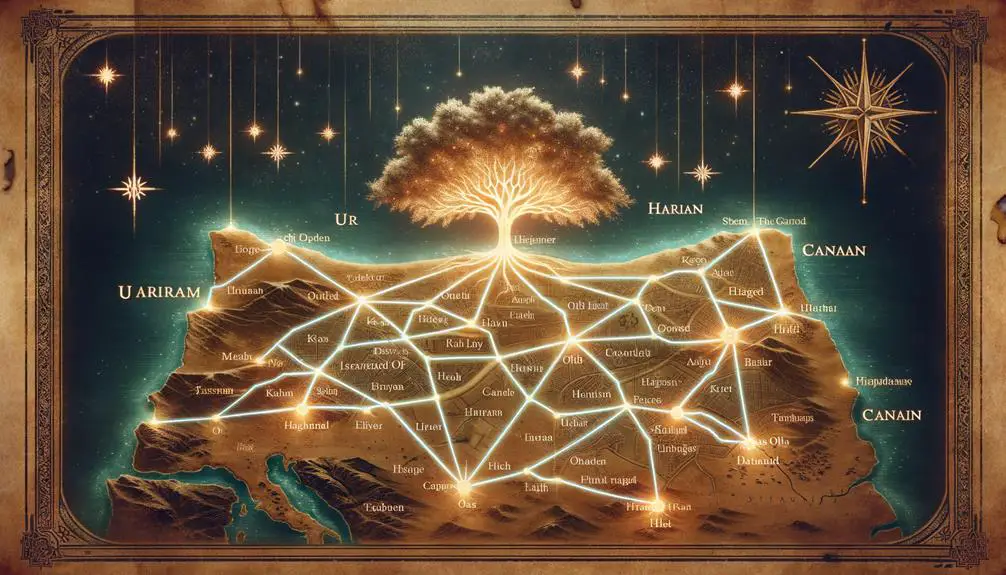
In exploring Haran's legacy in faith, it's crucial to recognize its pivotal role as a crossroads of ancient religious thought and practice. Haran wasn't just a geographical location; it represented a melting pot where diverse beliefs and traditions intersected. This place, rich in history and spiritual significance, holds a unique position in the narrative of faith, particularly through its connection to key biblical figures.
- Family Dynamics and Haran's Descendants
- Haran's legacy is deeply intertwined with the narratives of its most notable descendants. The complexities of these family dynamics, including pivotal events and decisions, have profoundly influenced the development and dissemination of faith traditions. The stories of Haran's descendants provide insight into the challenges and triumphs faced by early believers, offering valuable lessons in faith and perseverance.
- Center for Religious Thought
- As a hub of ancient trade routes, Haran became a center for religious thought, where ideas from different cultures and beliefs mingled. This exchange facilitated a unique blend of religious practices and theological concepts, contributing to the rich tapestry of ancient faith traditions.
- Archaeological Significance
- The archaeological discoveries in Haran have shed light on the religious practices of the time, offering tangible evidence of the city's spiritual significance. These findings help bridge the gap between historical texts and real-world practices, providing a deeper understanding of ancient faith.
Haran's legacy in faith is a testament to the city's role in shaping religious thought and practice. Its history serves as a reminder of the interconnectedness of faith, culture, and history, offering valuable insights for both scholars and believers.
Frequently Asked Questions
How Did the Climate and Natural Resources of Haran Affect the Daily Lives and Occupations of Its Ancient Inhabitants?
In Haran, the climate and natural resources directly shaped your daily life and work. The region's moderate climate and abundant water sources supported varied agricultural practices, allowing you to grow a range of crops. These conditions not only dictated the types of food available but also influenced your economic activities, pushing you toward farming and livestock rearing.
This seamless integration of climate and resources into your lifestyle underscored the profound connection between environment and ancient livelihoods.
Were There Any Significant Religious Practices or Deities Unique to Haran That Differentiated It From Neighboring Regions in Biblical Times?
In your journey through ancient religious landscapes, you'd find Haran's temples towering like beacons of unique worship.
These sacred grounds were hotbeds for Deity worship, distinguishing Haran with its exclusive pantheon.
Unlike its neighbors, Haran's spiritual practices were deeply rooted in reverence for specific deities, setting it apart with a rich religious tapestry.
This distinct devotion painted Haran as a spiritual oasis amidst a vast desert of conformity.
How Have Modern Interpretations or Teachings in Various Faith Traditions Evolved Concerning the Significance of Haran's Role in Biblical Narratives?
You're diving into how different faith traditions have reinterpreted Haran's role in biblical stories. Analyzing Haran's geography alongside these narratives shows a deepening understanding over time. Scholars and believers alike scrutinize its significance, finding both historical and spiritual layers that weren't as emphasized before.
This evolution in narrative interpretation respects the original texts while enriching modern faith perspectives, highlighting how interpretations of sacred stories adapt and grow with ongoing theological and archaeological study.
Can Any Parallels Be Drawn Between the Societal Structure of Ancient Haran and That of Contemporary Societies, Especially in Terms of Governance or Community Organization?
You might think ancient cities like Haran can't teach us much today, but you'd be surprised. When comparing their societal structures to ours, parallels in governance and community organization emerge.
Just as social media shapes our communal interactions now, marketplace gatherings did then. Urban planning, too, shows similarities, with ancient city layouts influencing modern ones.
Analyzing Haran's structure offers valuable insights into the evolution of societal organization and governance.
What Impact Did Trade Routes Passing Through Haran Have on the City's Economic Prosperity and Its Interactions With Other Ancient Civilizations?
Trade routes passing through your city significantly boosted its economic prosperity. The caravan strategies you adopted facilitated interactions with distant civilizations, bringing wealth and cultural exchange.
Merchant tales, often overlooked, played a crucial role in shaping your city's identity and its relations with other regions. These routes weren't just paths for goods; they were lifelines that connected you to the intricate web of ancient trade and diplomacy.
Conclusion
In your journey through biblical landscapes, Haran stands as a crossroad of faith and history, a place where Abram's journey both ends and begins anew. It's a testament to the enduring legacy of ancient texts and archaeological marvels that whisper tales of yore.
Haran's significance, nestled between the lines of scripture and soil, challenges and reaffirms faith, inviting a deeper exploration of spiritual roots. This junction of past and present, myth and reality, continues to shape the narratives of belief and understanding.

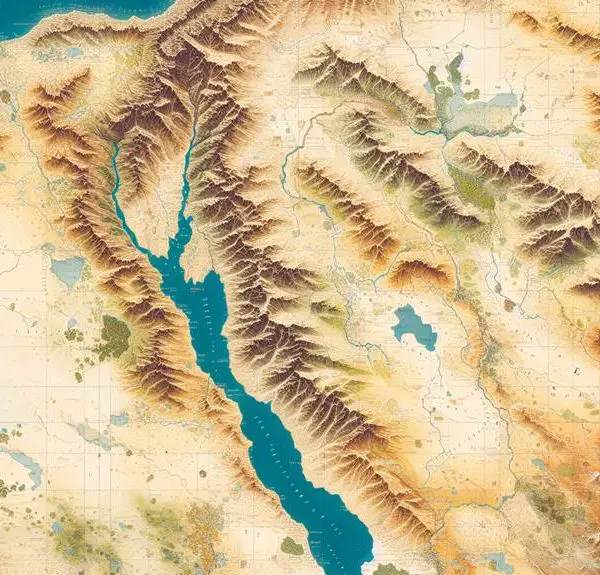

Sign up